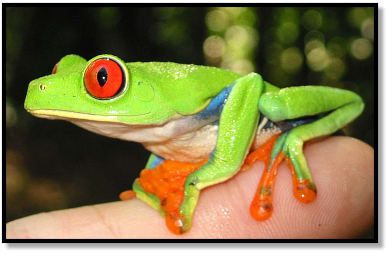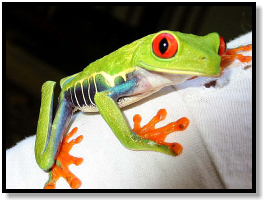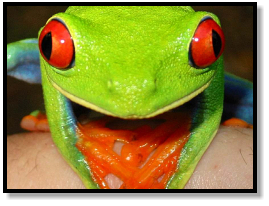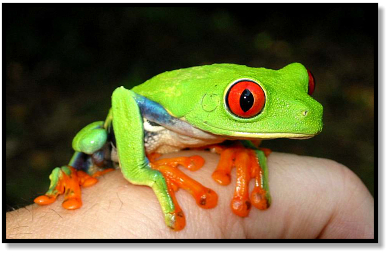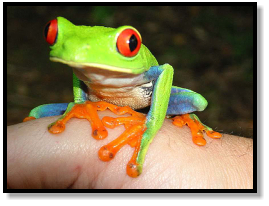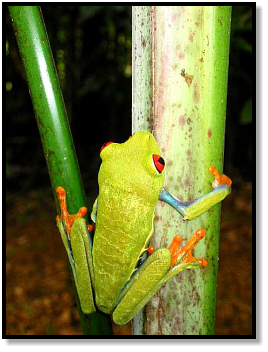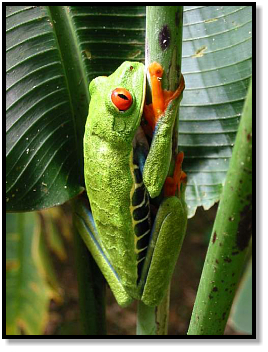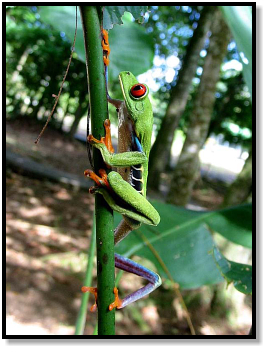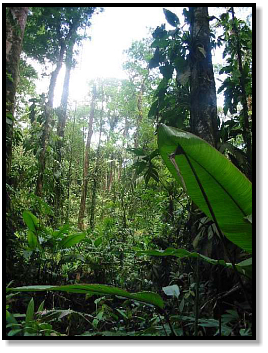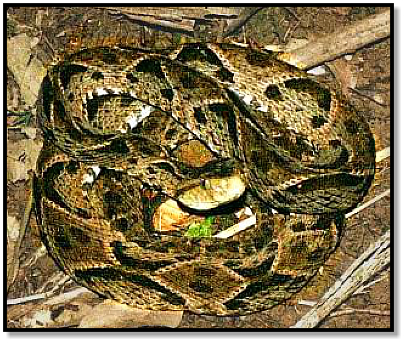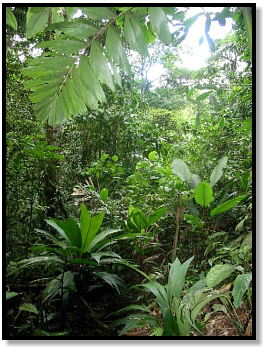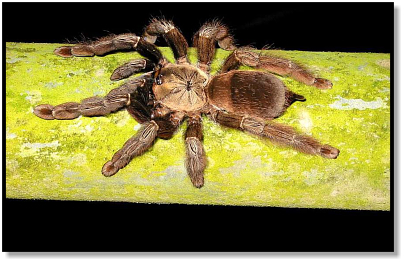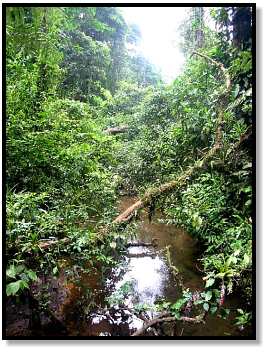

COSTA RICA
April 2002

7 of 7


COSTA RICA
April 2002


7 of 7
After sleeping late again we head back into the rainforest for an afternoon hike. As we’re walking along and
talking with Roberto, he decides to bust us. “Alright, guys, you missed it. Let’s go back.” We reverse direction about
50 feet to where he gleefully points to a Hog-nose Viper we nearly stepped on by the edge of the trail.
Roberto is so happy gloating about our oversight that a few moments later he walks right by a small snake on
the crawl. Now it’s our turn to call him back and ask how in the world an accomplished herpetologist like himself
could miss such an obvious spot. Actually, it’s extremely cryptic, one of the small snakes that hide in the leaf litter.
Not so cryptic are the giant centipedes who shamelessly couple in public no matter who walks by.
The next capture is a joint venture. Ron and Roberto simultaneously see, dive, and grab for a brown streak that
slides off the path. It goes down into the leaves and under a log, but between the two of them they came up with it, a
common type of Racer.
Later on we spot an enormous Gecko way up a tree but far out of reach, so we settle for a Blunt-headed Tree
Snake that’s in the same place, but a lot closer.
As it gets dark we spot the reflected eyeshine of Smokey Jungle Frogs (what a great name!). These enormous
frogs come out at night and wait in ambush for a variety of small creatures that make up their prey. Stationing
themselves near holes in the forest floor, they quickly escape if pursued by predators, such as herpetologists. About
the size of a large bullfrog, but without the webbing of an aquatic frog, Jungle Frogs emit an eerie cry when caught,
like the distress call of an alien child. They also exude a slimy secretion that can cause an allergic reaction (oddly,
respiratory rather than topical).
Because of the drought we had given up hope of finding a particular frog high on our target list, but Ron’s
persistent searching pays off when he spots this sleeping beauty beneath some overhanging leaves.
It’s the Costa Rican poster child itself, a Red-Eyed Tree Frog.
We finish up our hike, passing a tarantula and making the last find of our trip, a Fer-de-Lance. It’s a fitting
encounter, since we had come to think of this snake as our host in Costa Rica. Although we found 19 different species
of snake during the trip, this was the one we saw most frequently, accounting for 8 of the 35 individual snakes we
recorded.
We pause to admire its dark, textured coils ― the local name, Terciopelo, means “velvet” in Spanish ― and take a
final photo.
We leave the rainforest with a quiet sense of satisfaction, and the conviction that we’ll be back.
Red-Eyed Tree Frog
Agalychnis callidryas
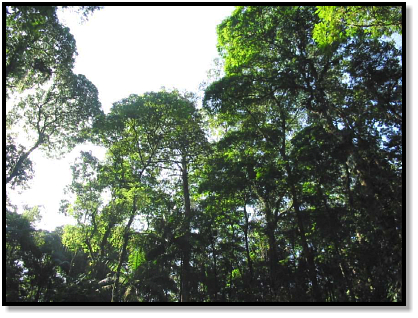
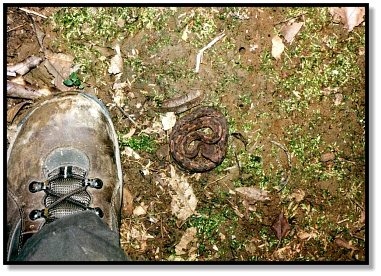
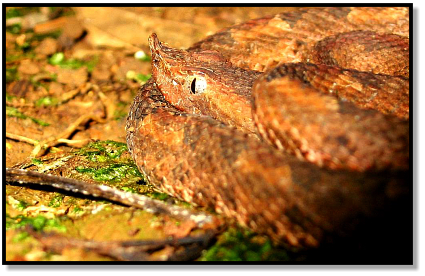
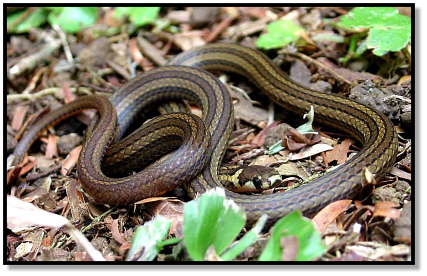
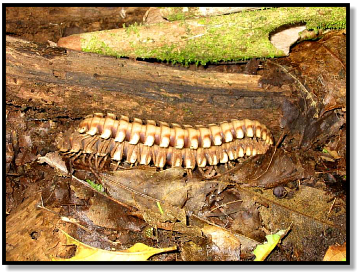
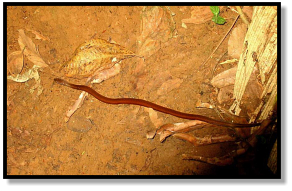
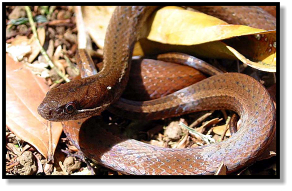
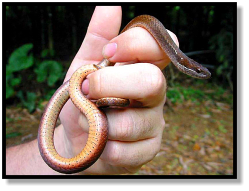
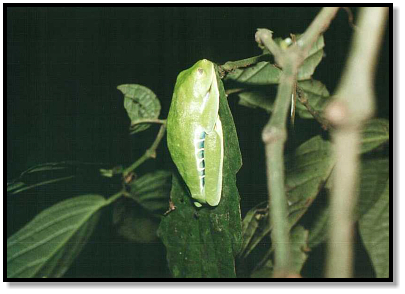
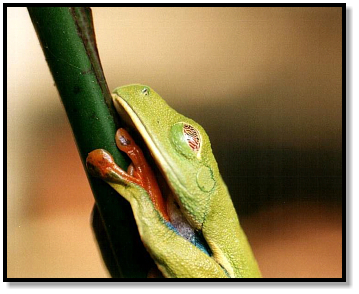
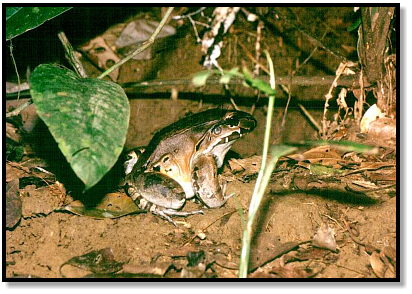
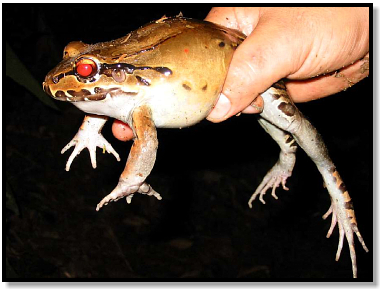
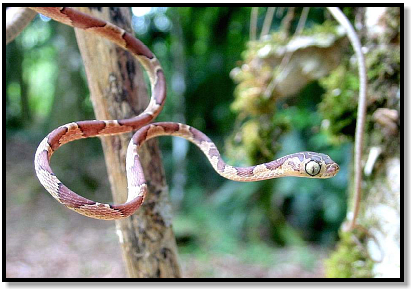
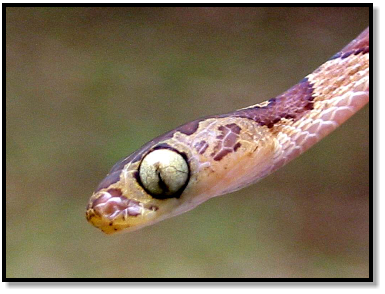
Litter Snake
Tantilla reticulata
Yellow Belly Snake
Coniophanes fissidens
Smokey Jungle Frog
Leptodactylus pentadactylus
